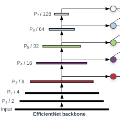As the population grows and more land is being used for urbanization, ecosystems are disrupted by our roads and cars. This expansion of infrastructure cuts through wildlife territories, leading to many instances of Wildlife-Vehicle Collision (WVC). These instances of WVC are a global issue that is having a global socio-economic impact, resulting in billions of dollars in property damage and, at times, fatalities for vehicle occupants. In Saudi Arabia, this issue is similar, with instances of Camel-Vehicle Collision (CVC) being particularly deadly due to the large size of camels, which results in a 25% fatality rate [4]. The focus of this work is to test different object detection models on the task of detecting camels on the road. The Deep Learning (DL) object detection models used in the experiments are: CenterNet, EfficientDet, Faster R-CNN, and SSD. Results of the experiments show that CenterNet performed the best in terms of accuracy and was the most efficient in training. In the future, the plan is to expand on this work by developing a system to make countryside roads safer.
翻译:随着人口的增长和越来越多的土地被用于城市化,生态系统受到我们的公路和汽车的破坏,生态系统受到我们的公路和汽车的破坏; 基础设施在野生生物领土上的扩大,导致许多野生生物 -- -- 车辆碰撞(WVC)的发生。WVC的例子是一个全球性问题,正在产生全球社会经济影响,造成数十亿美元的财产损失,有时还造成车辆占用者死亡。在沙特阿拉伯,这个问题与此相似,骆驼 -- -- 车辆碰撞(CVC)的例子由于骆驼规模大而特别致命,造成25%的死亡率[4]。这项工作的重点是测试不同物体探测模型,以探测路上的骆驼。实验中使用的深研习(DL)物体探测模型是:CentNet、PaffectedDet、Peast R-CNN和SSD。实验结果显示,CentreNet在准确性方面表现最佳,培训效率最高。未来,计划扩大这项工作的范围,开发一个使农村道路更加安全的系统。




